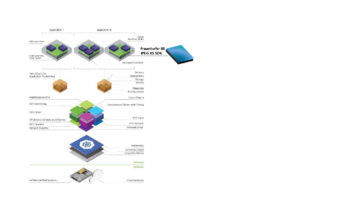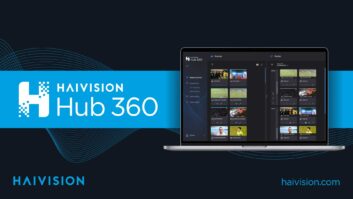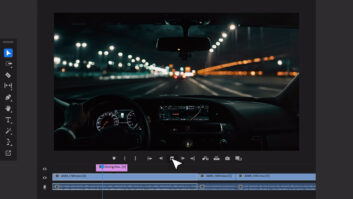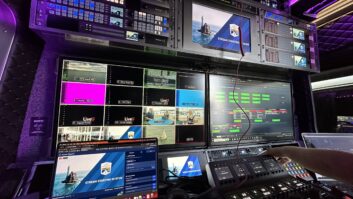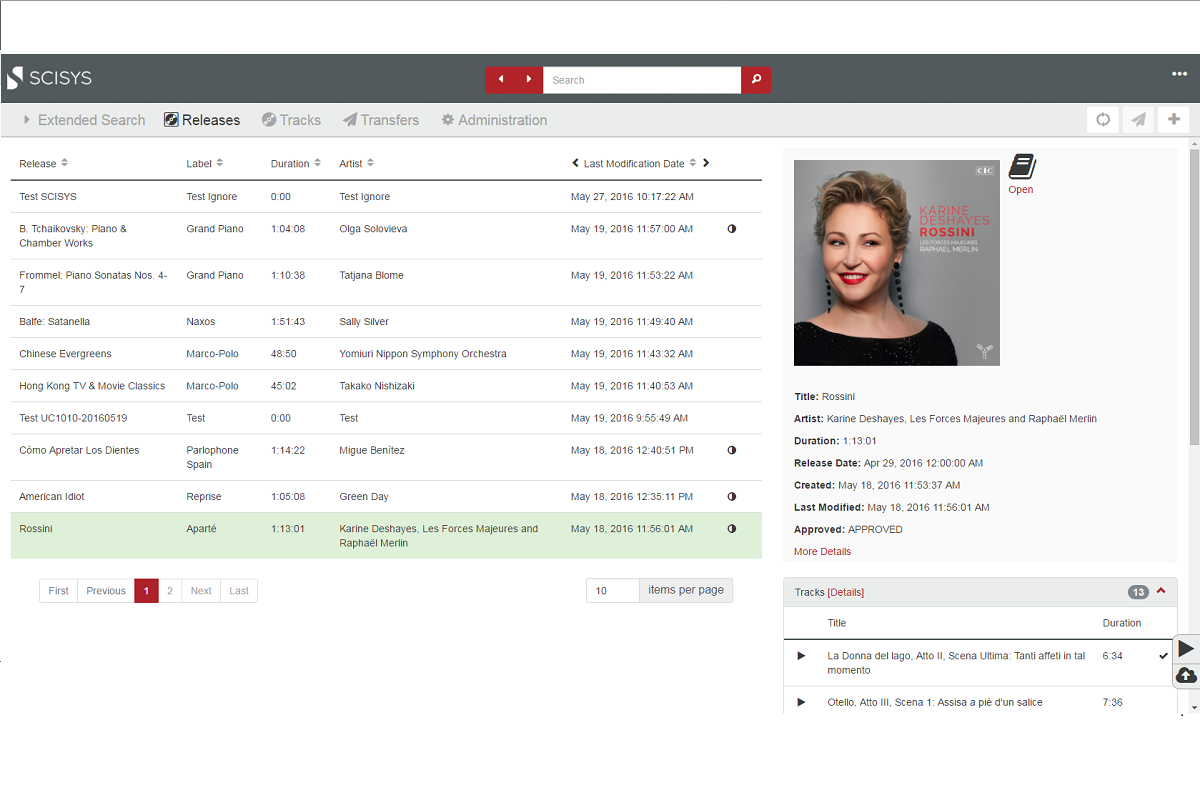
Try sending a physical CD by a new artist to Spotify or iTunes for inclusion on their platform and see how far you get. So why are broadcasters still willing to work – and drown – in the ways of old? Here’s how one major UK broadcaster solved the problem.
Unless you are of a certain age, you might not have noticed that CDs have long been consigned to history. Like the home landline telephone or the film camera, the only function that silvery plastic discs serve anymore is being a failsafe tool for linking to a bye-gone era. When almost everything nowadays exists as a digital file, what use are physical books, print-outs, DVDs or music CDs? Or, indeed, the CD storage tower?
Even if vinyl is making a comeback in a growing minority of people’s home, surely – in in the file-based digital age that we inhabit – CDs are the last dinosaurs of the music age?
The global music industry generated $50 billion in 2012, according to recent data from Statista, and streaming services are taking centre stage. Digital formats in the consumer space are close to taking up half of all recorded revenue in the United States.
The fundamental shift that has occurred is that record labels and associated services such as iTunes and Spotify are increasing selling access to music instead of selling things, such as CDs.
Yet some dinosaurs still do CD ingest by hand. And paying someone to do it.
Add it all up in terms of time and money: 10–15 minutes locating the CD, opening, loading, logging; 20 minutes scanning the booklet and saving the CD info; 20–30 minutes of typing the metadata, sorting tags and categories. Now count the number of CDs, let alone factor in the time and expense of collecting the post, unpacking, sorting, coding, filing, storing, etc.
Please! And let’s not even get started on asset rights management and licence management.
When savings need to be made, why not start here?
So why are broadcasters and the like still choosing to wade through the daily deluge of manually ingesting music CDs – physical, plastic discs! – by hand? In this regard, CDs perhaps aren’t the last and only dinosaur of the file-based age after all.
Might as well be using typewriters
It would be truly deflating to discover that, somewhere out there, was a pool of journalists still only using typewriters to write and file copy, who were still trying to be on good telephone terms with the lady in archives down in the basement because only they have access to the best records and information. They might as well be sending their photojournalists to the pharmacy to drop off rolls of 35mm film for processing.
So why are we not shocked that the typical “classical” music ingest desk still looks the same as it did two decades ago? There are still many broadcasters who leave the ingest, archiving and cataloguing process to the only people who understand which pile of CDs on their desk is what pile.
But why bother sticking with CDs? Has anyone even asked the question in your organisation? The even bigger question is, why go through the pain of having to the music ingesting by hand at all, when every piece of music, associated files, artwork and metadata exists in digital form?
It would be unimaginable for iTunes, Amazon Music or Spotify to ask record companies for physical CDs. (They don’t.) Without existing digital supply chains for music, they would be drowning in plastic. The fact that broadcasters still work this way remains a mystery. Some, but not all.
Access music and data ingest from the cloud
One major UK broadcaster, for instance, is right now in the process of moving its entire classical output towards an online Music Industry Receiving Architecture (MIRA) solution that integrates seamlessly with its dira! software system, used by the majority of its radio stations.
The new system is always up-to-date, available to all and serves as a centralised distribution solution that is organisation wide. Called dira! MORE (Music Online Repository), the benefits of the solution are manifold. Instead of doing the dull work of many CD ingest themselves, staff can now use their time and resources on more important things. Like radio production.
The dira! MORE is a state-of-the-art technology stack that is not only built with rock-solid robustness but is optimised to be future-proof. It goes without saying that is works on mobile devices and desktops, with the software being cloud hosted, of course.
These two factors alone guarantee minimal storage requirements for the broadcaster, while using reputable AWS storage tiers as support means that their operation costs are reduced further.
Built by digital-radio specialists SCISYS, the internet-ready, file-based hosting and workflow allows the broadcaster to tap in to a single source for all music and data that resides securely outside its own firewalls. It means that broadcasters can now get music and fully searchable metadata direct from record labels directly into their production and playout systems. The good thing is that you would not need to purchase a full dira! playout system to use this solution.
The solution itself supports Unicode and uses standard DDEX protocols for the actual music delivery, used for example by Amazon, Apple, Google, PRS, Spotify, Warner, Universal, BMI, Sony, GEMA etc. The system then handles the automated file conversion into all major broadcast audio formats and standard.
Lead not follow
And on that point, the old way of music ingest means that demo tapes and exclusive material from new artists are never going to be discovered (let alone played) by the music teams if those discs haven’t been fed into the station’s music database in the first place. Perhaps this is why younger generations rely so heavily on Spotify and Apple music to discover the fresh music of their generation. Who has time to wait?
Broadcasters – being the valuable promoters that they are – need to be on the front foot, instead leading the way rather than follow. Only then will audiences grow. That is why music labels turn to them as much as they do. But they won’t be sending CDs forever.
With an online music repository, new artists and albums are always on hand in an ever-growing universal database that is always going to be larger than the equivalent belonging to any one organisation. This is because the system is fed directly from the back end by music labels themselves.
Today, each new release will come with a full package of media assets and multimedia files with metadata included for full extended search capabilities. And this is routinely distributed through automatic notification. Not through the medium of a plastic disc, a jewel case, padded envelope and a stamp.
Adopting a file-based workflow
Adopting a file-based workflow, when you think about it, makes perfect sense. It is seamless and uses industry-standard APIs for all file handling, access and metadata. The beauty of the dira! MORE solution is that it can be used as an exclusive, standalone repository or be configured to transfer and process files, music, assets and metadata to a network of receiving systems simultaneously for production and playout – whether for TV, radio or online.
User and rights management reporting and statistics functions are all built in and accessed by single sign-on using ADFS for their users.
For broadcasters, the final added benefit of adopting a solution such as this is that it is a secure solution residing outside the internal IT architecture. This means that all security and penetration testing is done externally.
The universal cloud-solution brings a host of other benefits. For DJs and producers, standard APIs mean that distribution in all standard formats is built in. For IT and security teams, the problem of firewalls and security goes away because this is part of the dira! MORE solution. And despite this, the openAPI still provides access to third-party systems
More time spend making radio
The equally compelling added benefits, or course, are the environmental energy and physical space savings offered by abolishing the so-called compact disc. There is no more shipping and say goodbye to all of that wasteful packaging. Not to mention the dust.
For the poor person who had glorious role of putting the actual disc in the CD slot and doing the manual entry of metadata, well, they can now be reassigned to do other things.
The biggest savings – apart from money and infrastructure – are undoubtedly the time freed up to producing bigger and better radio projects. People can spend less time in the basement cataloguing and archiving, and instead be working on more compelling shows. Why would you do anything else?
All of this is obvious.
Every profession has mundane tasks that take away from the main job at hand. But it is easy to slip into the comfortable position of doing “business as usual”, being too focused on the unimportant stuff to realise that, actually, you yourself have turned into a dinosaur.
By Jesse Karjalainen, corporate communications manager, SCISYS and Oliver Giese, head of business segment MBS UK & IRL at SCISYS Deutschland GmbH

